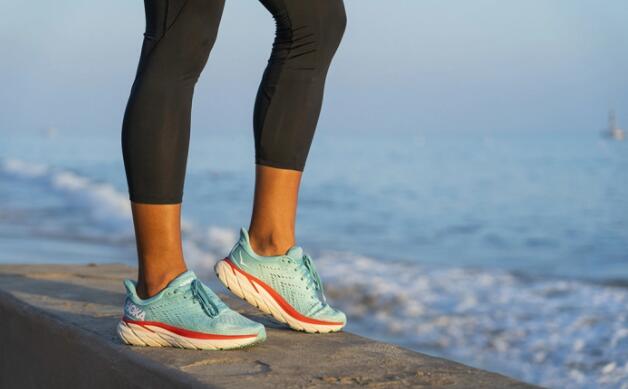Hoka Is Stealing More Running Market Share as Brand Hits $1B in Sales During Last 9 Months
Deckers Brands is showing no signs of letting its foot off the gas when it comes to its two super star footwear brands, Hoka and Ugg.
On Thursday, the Goleta, Calif.-based company reported net sales in the third quarter of 2023 of $1.346 billion, an increase of 13.3% compared to the $1.188 billion seen the same quarter last year.
The gains were due in large part to Hoka, which saw net sales jumping 90.8% to $352.1 million in Q3 compared to $184.6 million in same time last year, another quarterly record for the brand. Just two quarters ago, Hoka achieved $1 billion of revenue on a trailing 12-month basis. And with the quarter just delivered, the brand has now eclipsed $1 billion of revenue over the last nine months.
In a call with analysts on Thursday, Dave Powers, president and CEO of Deckers Brands, said Hoka’s growth in the third quarter was primarily driven by share gains with run specialty accounts in the wholesale channel as product flow improved this year, allowing for better sell-throughs.
“According to aggregated U.S. run specialty store data, during December, Hoka increased market share by 5 percentage points versus last year, delivered the highest average product turns and maintain a gross margin well above the channel average,” said Powers.
The CEO added that the company also added points of distribution with select strategic accounts slowly throughout the year. As for where this growth is taking place, Powers noted that Hoka has a “strong” presence in REI stores, is in a handful of Foot Locker locations and has expanded into more Dick’s Sporting Goods doors in the third quarter.
“On a global scale, we are very selective of who we sell Hoka to at wholesale,” Powers said on the call. “We’re always prioritizing the run specialty channel – that’s our bread and butter. We’re not really looking to expand to too many doors in wholesale. We’re focused on healthy sell-through and expanding categories.”
As for Ugg, which saw a 1.6% dip in sales to $930.4 million in the third quarter, Powers is still confident the brand will return to growth as demand is still there for the product. Overall, consumer demand for Ugg was strong in the quarter as the brand delivered global gains in DTC across genders and categories, the CEO added, but these gains were offset by unfavorable foreign currency exchange rate impacts across all channels as well as lower wholesale revenue.
“This wholesale decline resulted from the unique shipment timing dynamics discussed at the outset of this fiscal year, which included an expectation that the third quarter would be impacted,” Powers told investors. “Specifically, these earlier shipments drove temporarily elevated levels of inventory in the channel. As a result, and in line with our marketplace management strategies, the Ugg brand’s attention shifted to selling through product already in the channel to strategically reduce marketplace inventory, allowing DTC to capture demand upside and limiting the need for excess promotional activity.”
Pressed further in the call, Powers added that given the brand’s past inventory position, Ugg pulled back a little bit on how much it invested in some of its new styles, not anticipating how strong the consumer demand for them would be. “The platform styles, the Tazz and the Ultra Mini, those styles, in many cases, sold out to the piece,” he said. “So, we missed some opportunity there.”
“The good news is that wholesalers want more, the consumer wants more, and we’ve realized that these extended classics — more iterations of core classics that keep our brand DNA intact – are resonating very, very well,” Powers added.
